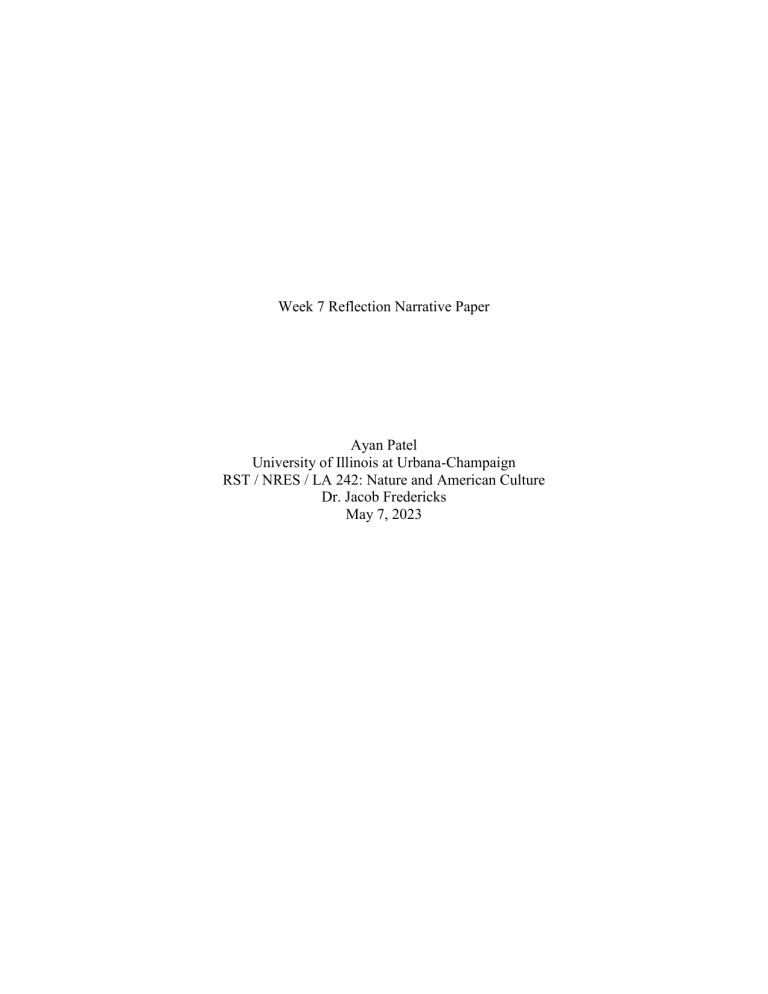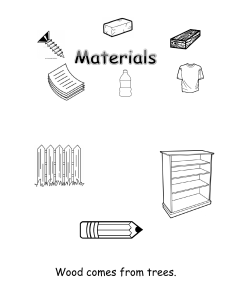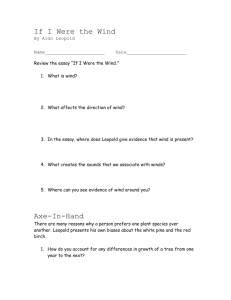
Week 7 Reflection Narrative Paper Ayan Patel University of Illinois at Urbana-Champaign RST / NRES / LA 242: Nature and American Culture Dr. Jacob Fredericks May 7, 2023 The Park That Shaped Me: My Environmental Autobiography The landscapes of our youth often become the landmarks of our hearts, shaping our attitudes towards the environment, and defining our interactions with nature. My childhood was marked by the imprint of one place - a park in my hometown. This park not only served as a playground but also a learning center where I developed my perceptions and values about nature. It was the foundation of my perspective of nature. Without the times I spent at parks as I child, I might not have viewed nature as the safe place, or quiet place, I’ve grown accustomed to. Situated in the heart of the city, the park was a local haven, a green oasis amidst a bustling urban landscape. It boasted an impressive array of towering trees, inviting playground structures, winding walking trails, and a serene lake. This was the arena where I played, explored, and ultimately, where I formed a deep connection with nature. The feelings that the park evoked were ones of freedom, curiosity, and tranquility. Growing up, the park became a repository of stories and traditions, embedding in me a sense of place and history. The towering trees and the stone benches whispered tales of the past, shaping my understanding of nature as a continuum of cultural heritage (Cronon, 1995). The park wasn't just a space; it was a living entity that spoke of our collective history and experiences with nature. The park also served as an effective classroom for practical learning. It was where I first experienced the interconnectedness of the ecosystem - the birds chirping in the trees, the squirrels scurrying around, and the occasional sight of a fox. These interactions instilled a sense of wonder and respect for biodiversity and the intricate balance of life. As I grew older, my perspective of the park evolved. It transformed from merely a place of leisure to a symbol of resilience, a bastion of nature amidst urban sprawls. This realization aligned with Marris's (2011) concept of the "new wild," where nature is understood to be dynamic and resilient, coexisting and intermingling with human-made environments. While my park did not directly experience the westward expansion, its existence is a testament to the ideas of manifest destiny and progress that underpinned such movements (Limerick, 1987). As cities expanded, the park served as a beacon of the struggle between expansion and preservation, reminding us of the necessity of balancing growth with the preservation of green spaces. The park's existence today is a testament to the importance of nature preservation and conservation. It embodies Leopold's (1949) "land ethic," which advocates for a respectful and ethical relationship with nature. The park, through its trees, biodiversity, and ecosystems, taught me to value these principles, thereby shaping my environmental consciousness. In essence, the park of my childhood has been more than just a physical space; it has been a teacher, a sanctuary, and a window into the complexities of our relationship with nature. It has shaped my values and understanding of nature, imprinting on me the indelible mark of its trees, trails, and tales. References: Cronon, W. The Trouble with Wilderness: Or, Getting Back to the Wrong Nature. (1995). Leopold, A. A Sand County Almanac. (1949). Limerick, P. The Legacy of Conquest: The Unbroken Past of the American West. (1987). Marris, E. Rambunctious Garden: Saving Nature in a Post-Wild World. (2011).



